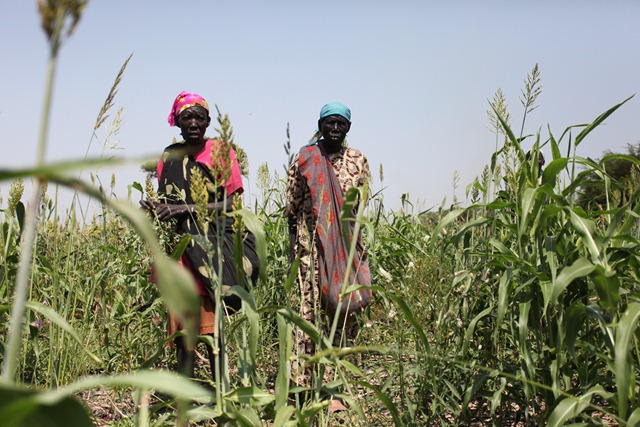Droughts could push parts of Africa back into famine
By Jeremy Hance, www.mongabay.com
19 December 2011 Drought and erratic rains could lead to further food scarcities in Africa warns the United Nations World Food Program (WFP). The WFP singles out South Sudan, the world’s newest nation, and Niger as nations of particular concern. Earlier this year famine killed scores of people, including an estimated 30,000 children, in Somalia. In South Sudan drought and ongoing conflict threaten food supplies for 2.7 million people. “A gathering storm of hunger is approaching South Sudan, caused by crop failure and market disruption,” said WFP director in South Sudan, Chris Nikoi. “Food prices have already doubled or tripled in some areas, leaving hundreds of thousands of children vulnerable to malnutrition at a key developmental stage of their young lives.” The WFP states it is upping operations to feed more people in the new nation in 2012, but warns that lack of infrastructure and land mines makes travel difficult. It says it needs emergency funds of nearly $100 million for food services in South Sudan for the first quarter of 2012. Meanwhile, rising food prices in Niger also threatens food security on the continent. Ongoing droughts hit crops this year, raising prices during a season when they are usually expected to fall. Higher prices have put 750,000 people on the government’s list of “severely food insecure.” Niger is located in the dry Sahel region, just south of the Sahara Desert. The WFP warned that Sahel nations, such as Mauritania, Mali, and Chad, could also face food issues in the coming year. Drought is a regular occurrence in both South Sudan and the Sahel and communities have long-adapted to dry conditions, however some say recent droughts may be worsening due to climate change. A recent study in Climate Dynamics found that climate change is likely creating more drought conditions in East Africa. “Global temperatures are predicted to continue increasing, and we anticipate that average precipitation totals in Kenya and Ethiopia will continue decreasing or remain below the historical average,” said co-author and USGS scientist Chris Funk. “The decreased rainfall in eastern Africa is most pronounced in the March to June season, when substantial rainfall usually occurs. Although drought is one reason for food shortages, it is exacerbated by stagnating agricultural development and continued population growth.” Another recent study in Journal of Arid Environments found that climate change was killing trees in the Sahel region. “Rainfall in the Sahel has dropped 20-30 percent in the 20th century, the world’s most severe long-term drought since measurements from rainfall gauges began in the mid-1800s,” said lead author Patrick Gonzalez. “Previous research already established climate change as the primary cause of the drought, which has overwhelmed the resilience of the trees.” The study found that one in five tree species vanished locally. Economically-important fruit and timber trees were the first to go.
